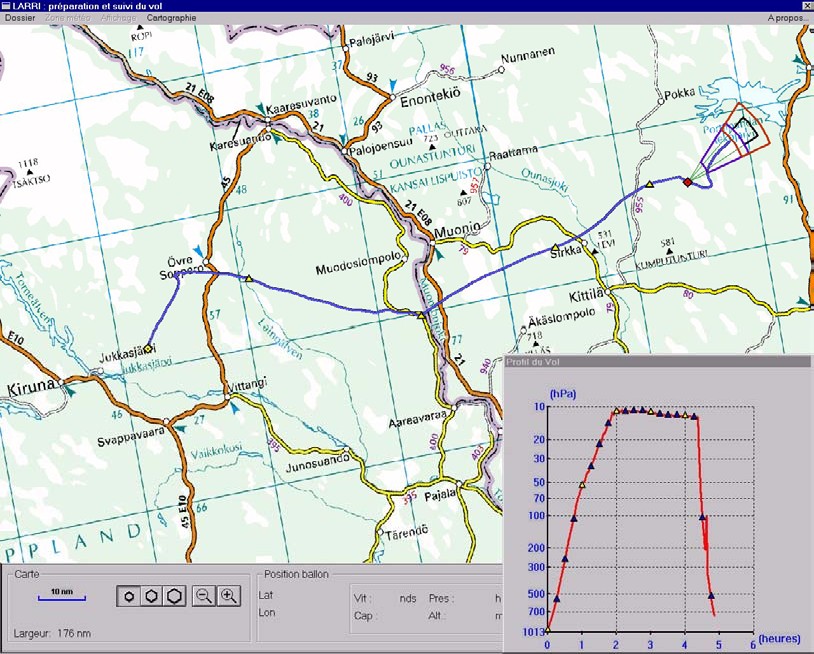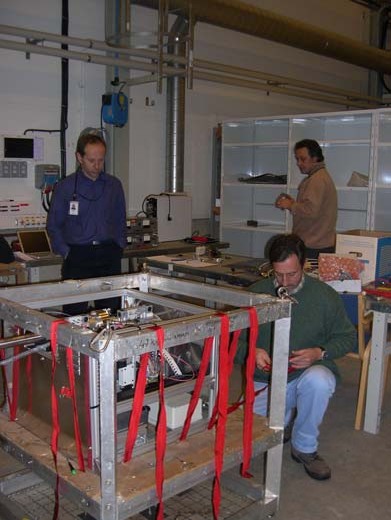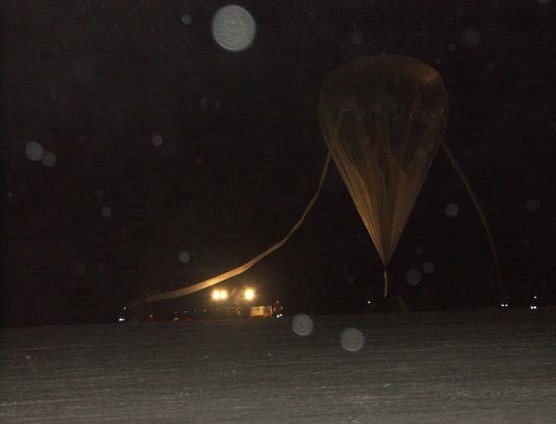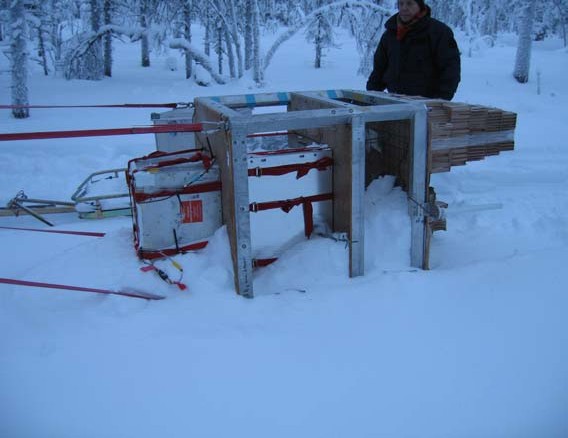Purpose of the flight and payload description
At the beginning of each launch campaign, the technicians of the balloons division of the Centre National d'Etudes Spatiales (CNES) perform an initial launch called "opening flight" which is aimed to test several systems to be used during the rest of the campaign. Sometimes, thes flights can carry also small scientific experiments as "piggy back" payloads.
In this case the flight gondola included an instrument called DUSTER designed to bring back aerosol samples where abundance, size distribution, composition and mineralogy will be measured for each class of materials collected.
A sampling of the stratosphere will invariably include particles from different sources with relative contributions that vary as a function of time, altitude, and possibly geographic location. At any time the stratosphere contains extraterrestrial dust, dust from natural terrestrial sources (volcanic dust, wind-blown dust, biomass burning) and dust related to anthropogenic activities. The dust is collected by direct deposition on both holey-carbon thin films supported by standard Transmission Electron Microscopy (TEM) grids and other substrates.
Video footage of the launch
Details of the balloon flight

Balloon launched on: 1/9/2006 at 15:41
Launch site: European Space Range, Kiruna, Sweden
Balloon launched by: Centre National d'Etudes Spatiales (CNES)
Balloon manufacturer/size/composition: Zero Pressure Balloon
End of flight (L for landing time, W for last contact, otherwise termination time): 1/9/2006 at ~ 22:00
Balloon flight duration (F: time at float only, otherwise total flight time in d:days / h:hours or m:minutes - ): ~ 5 h
Landing site: Near Porttipahdan Tekojärvi in Finland.
Campaign: ENVISAT
External references
- Characterization of the DUSTER instrument for stratospheric dust collection and Raman analysis of stratospheric samples. De Angelis, Simone, Tesi di dottorato
- DUSTER. Aerosol collection in the stratosphere Memorie della Società Astronomica Italiana, v.79, p.853 (2008)
- List of balloons launched from ESRANGE SSC Space website (via Archive.Org)
1085If you consider this website interesting or useful, you can help me to keep it up and running with a small donation to cover the operational costs. Just the equivalent of the price of a cup of coffee helps a lot.




